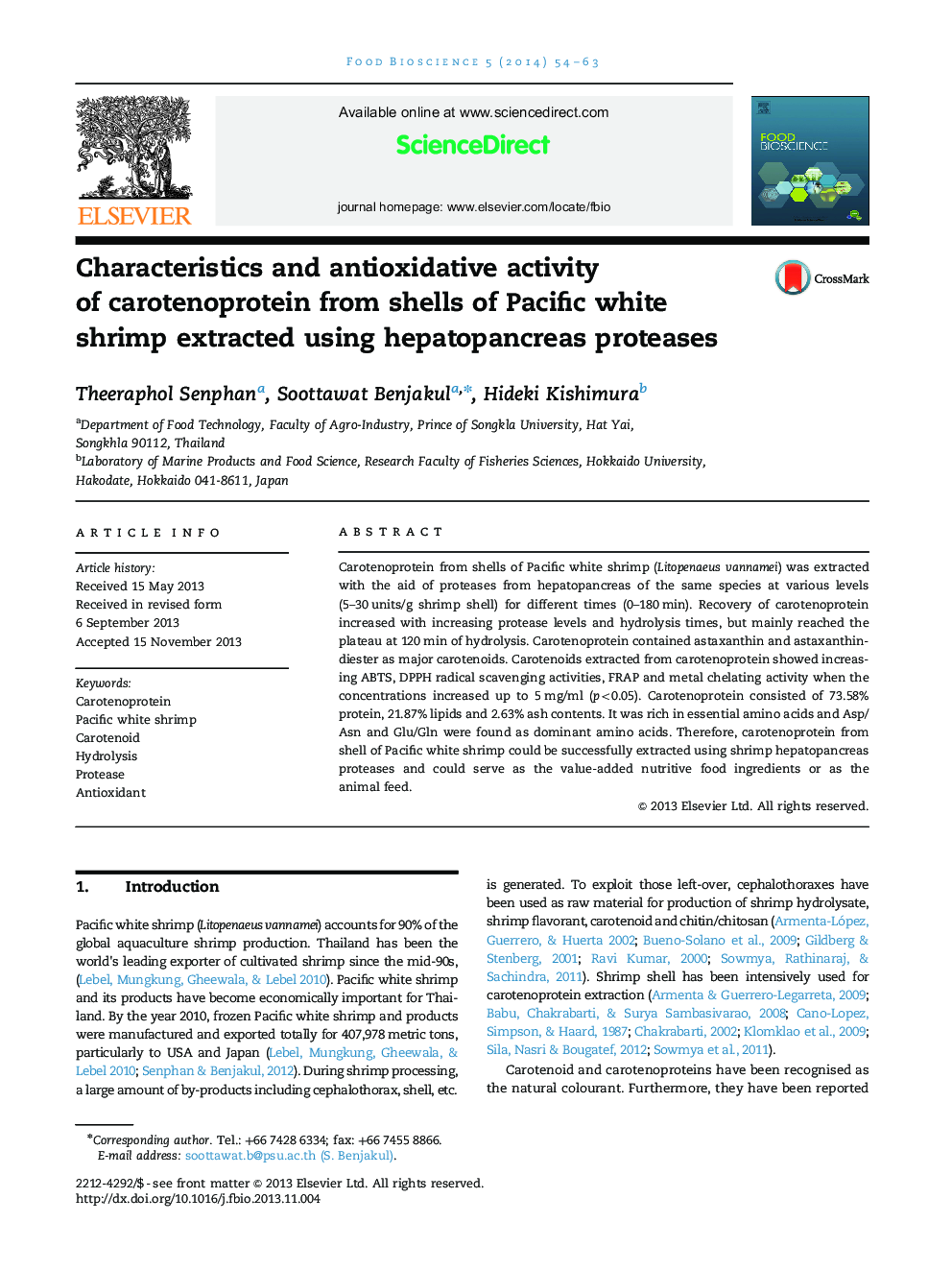| Article ID | Journal | Published Year | Pages | File Type |
|---|---|---|---|---|
| 19705 | Food Bioscience | 2014 | 10 Pages |
Carotenoprotein from shells of Pacific white shrimp (Litopenaeus vannamei) was extracted with the aid of proteases from hepatopancreas of the same species at various levels (5–30 units/g shrimp shell) for different times (0–180 min). Recovery of carotenoprotein increased with increasing protease levels and hydrolysis times, but mainly reached the plateau at 120 min of hydrolysis. Carotenoprotein contained astaxanthin and astaxanthindiester as major carotenoids. Carotenoids extracted from carotenoprotein showed increasing ABTS, DPPH radical scavenging activities, FRAP and metal chelating activity when the concentrations increased up to 5 mg/ml (p<0.05). Carotenoprotein consisted of 73.58% protein, 21.87% lipids and 2.63% ash contents. It was rich in essential amino acids and Asp/Asn and Glu/Gln were found as dominant amino acids. Therefore, carotenoprotein from shell of Pacific white shrimp could be successfully extracted using shrimp hepatopancreas proteases and could serve as the value-added nutritive food ingredients or as the animal feed.
